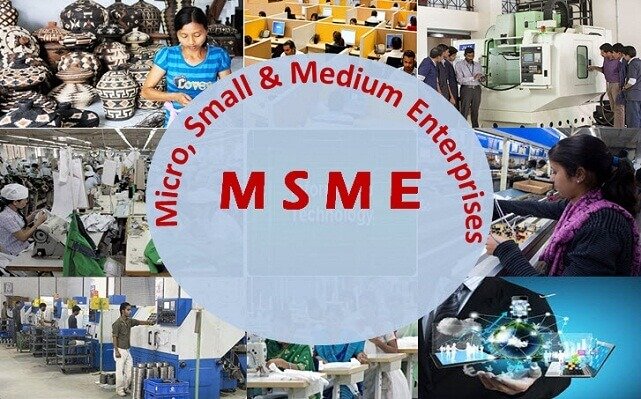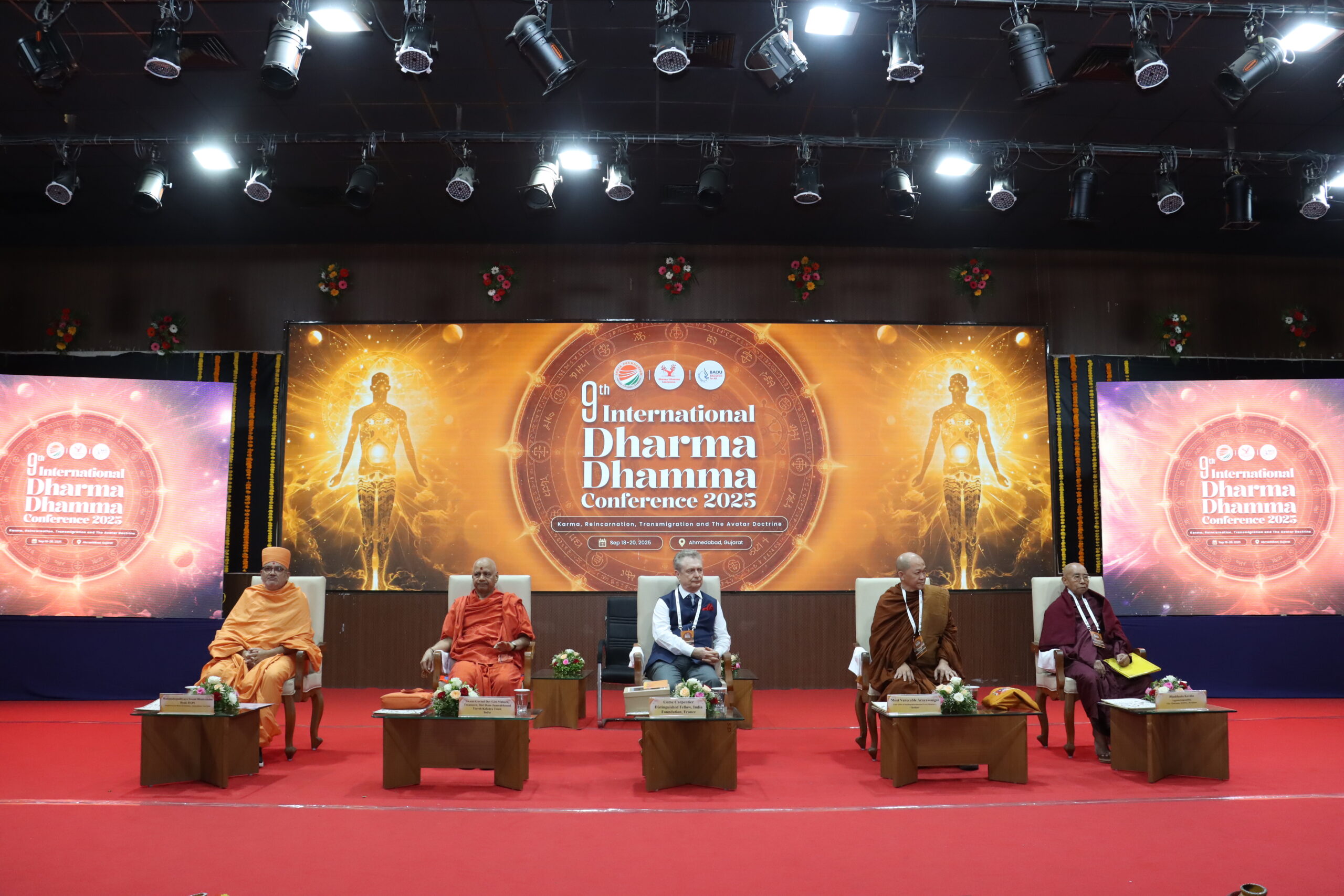Introduction
India has the second largest number of micro, small, and medium enterprises (MSME) in the world, second only to China, and these contribute to about 30 percent of the Indian economy and over 40 percent of the labour force.[i] These comprise over 63 million enterprises, of which 99.5 percent fall in the micro and small category. It is apparent that the growth of the Indian economy is going to be dependent on the growth of these industries; more so in the manufacturing space, which constitutes about 32 percent of all enterprises. The Government recognises the need for the manufacturing industries to scale and hence is creating incentives to bolster it.
There is no doubt of the government’s intent, which is moving quickly where necessary, to support industry, the emergency credit line scheme during the COVID crisis being a case in point. The recent budget is reflective of the government’s attitude, and it has lifted the spirits of Indian industry. Its effect is bound to benefit the MSME sector too. However, to really change the landscape and to implement changes, one needs to understand certain underlying issues.
Underlying Issues
Having gone through the experience of our company’s journey of manufacturing in India over the last 25 years and having been closely associated with entrepreneur forums and associations during this period, I am deeply aware of the circumstances of Indian entrepreneurs. Through this lens, I wish to throw light on some of the issues we need to overcome and the remedies thereof, if we are to truly meet the goal of becoming a USD 5 trillion economy in another five years.
As a point of reference and parallel, if we look back at the revival of the German economy post World War 2, it was largely provided by the growth of small industries into what became known as the ‘Mittelstand’,[ii] a backbone of the German economy. It employs about 60 percent of the work force and contributes to about 55% of net value added by all enterprises in Germany. Many of the Mittelstand companies are now world leaders in their expertise areas. During the development phase, after the war, the leadership, bureaucracy, academia, and entrepreneurs were united by a common purpose, and worked collaboratively to create the miracle. Their focus was on technology and manufacturing. Similar recoveries in Japan and China, and the development of nations like Korea and Taiwan are sources of learning, but the common factor that arises out of all these, is that manufacturing was enabled, not shackled, and that the growth was fuelled by the rapid scaling of the small Industries into medium ones.
In contrast, in India, we thwarted the efforts of our entrepreneurs, whose energies were diverted towards fighting the system, rather than in creating productive value. Labour trouble, constant barrage of show cause notices/raids from the multiple government departments, ongoing court cases, and state Industrial corporations that were in opposition, rather than in support, have been the bane of Indian manufacturing entrepreneurs.
The state of the industrial area in Navi Mumbai, where our company operates, is reflective of the state of the decay of the industry therein. The area which was once the start-up hub of over 6000 industries, now has unmotorable dusty roads where garbage and filth are the norm. Battling the system has worn down many an entrepreneur. The scars of their experience make them unwilling to stake any further, the risks and obstacles being too high. The resultant is that most enterprises having started about 20 years ago, operate more as one-man enterprises, without the visible potential that would take them to the next level. Many of the entrepreneurs are now at the stage of retiring and many of their children have chosen not to continue their family business, as the environment is not conducive.
We have made ‘small’ a virtue, but a certain level of scale is necessary for industry to be competitive and we need to support the rapid scaling of all enterprises having the potential and will to do so. With Indian manufacturing not being even a tenth of China, we are woefully behind. There is a lot to be done. Due to current global events, there is no better time to push for change, but we must not underestimate the extent and urgency of the task. A war like strategy is required. We may miss this bus also, if we do not act now. The remedy is going to need more than just policy changes.
I outline below the various key areas in which we need to act, if we are to make the transformation we seek. The solutions to industry’s problems, whether large or small are similar, except that the larger companies have the wherewithal to tackle these on their own, whereas the impact of the obstacles is debilitating for the smaller enterprises. If the restricting conditions are removed, these small enterprises, being nimble, will move quick, and the economy will show immediate revival.
Changing the National Consciousness, to work together for a Common Cause:
In Germany or Japan, post-World War 2, there was a driving common national purpose. In India, this is missing. In fact, the mindset at the level that operates with industry is bereft of any intent to support and facilitate. I recall, in 1996, when the land allocated to me for starting industry was stuck for over 5 years, and with no redressal in sight, I was fortunate to meet with the chief engineer of the MIDC, who could see the injustice, and he immediately found a way out of the situation for me, simply because it was the right thing to do, and it was his job to support industry. Such an approach has today become rare.
The professional duty of administration is to put the nations interest above all else, which in the case of those promoting industry is to look at things from the entrepreneur’s perspective. Today, we have got accustomed to apathy and purely selfish interest at the cost of honesty of purpose and action. Entrepreneurs and administration alike, wish to navigate only their personal agenda, and not think progressively. Wealth creators are viewed with suspicion, and there is a clear sentiment of ‘us’ versus ‘them’ between entrepreneurs and the administration.
How do we change a mindset that has got entrenched over such a long period? The call for an Atmanirbhar Bharat, is one that has already appealed to everyone, but it must galvanise all stakeholders on the ground—that is, the industry, the policy makers, and the bureaucracy, who need to work in unison. Programs educating all and creating an environment of collaboration will be required constantly. Projects that demonstrate visible results are required with planned outcome and constant measurement and review. Re-industrialisation of India must now be converted to a concrete goal.
Removing the Shackles of Restrictive Laws and their Implementation
The plethora of laws and controls that exist to regulate manufacturing activities have now become like a heavy stone that drags the industry down. Simplifying these laws is a priority. The implementation of Goods and Services Tax (GST) was one big game changer. In one stroke, the industry was free from the yoke of the provision in the of laws such as excise, sales tax, octroi, Local Body Tax (LBT) etc., which were hindering every decision and transaction of business.
In many countries, states have administrative staff, whose only job is to attract industry and facilitate their starting up. In India, we find ways to oppose the starting, through the number of licences needed, and so we rank 136 on the world bank survey on the ease of starting a business. The simplification of these processes is an urgent need.
In a similar vein, one needs to look closely at the various unnecessary compliances that companies must adhere to. There are many smaller laws that can quickly change. Their elimination or simplification would remove unproductive work. Many simple to implement examples come to mind; for example, the need for MRP labelling for retail sale can be removed on industrial goods, where consumers are B to B and not B to C, saving enormous rework and error in transferring goods from domestic to export sale and vice versa due to the different labelling on them. Another such example is the document submission required by banks for import and export transactions. Such wasteful requirements can be done away with, given the intent. With so much that can be shifted on-line, it is easy to find remedies to unproductive practices. A special force must be dedicated to cover these areas for rapid action.
Providing Basic Facilities in Infrastructure and Financing thereof
The availability of land to start industry has been a major problem. The Gujarat government in the last two decades has demonstrated that it is a problem possible to overcome, by providing land at reasonable rates, and supporting industry to set up new projects, on a fast track basis. Smaller companies face the challenge that the cost of premises is too high an initial investment, and uses up scarce resource, needed for the actual business.
Building industrial parks (possibly in collaboration with private entities), where small and medium industry could operate, would provide a solution to the problem of infrastructure. Flatted factories could be created with reasonable lease rents, that are given for extendable 3-year periods; (like was done in SEEPZ, the export processing zone, in Mumbai). In existing industrial zones, many units lie shut, and are stuck due to statutory liabilities or other legal issues. Buyers are unwilling to get entangled in a messy situation that could prove to be a liability later. Here, the appropriate agencies could create a transparent process to transfer these properties either to a new buyer or back to the industrial corporation, freeing up existing infrastructure for immediate use.
The need for capital to put up the land and building is often a major hurdle. The loans given by banks do not cover investments for land, and the capex loan tenure for constructing a building is just five years. If the infrastructure development loans had interest rates and tenure like the home loans, it would facilitate the creation of much needed infrastructure, whereas the money for the machinery could be allocated more judiciously through short term loans.
Creating Opportunity to ensure the Demand on the back of which Industry would Develop
India is a consumption driven economy. This is probably the biggest benefit we can leverage to create our growth story. Producing high quality goods is no longer an option, as customers have gotten used to global quality standards, but we must encourage and take pride in what is made-in-India. Meanwhile, though Indian industry must be competitive, it must simultaneously be protected from low-cost unfair import dumping, so that it can survive in the first place.
Collaboration among industry and commitment to support each other with business, is likely to be one of the biggest factors for growing the industry. In the German development program, the state institutions, academia, and the entrepreneurs had a close collaborative relation. This needs to be replicated in India too. Each major national institution should have a special cell that promotes an Atmanirbhar Bharat, in which any process hurdles in dealing with the institution would be addressed and dealt with. Continuous vendor development programs encouraging Indian entrepreneurs should be a part of an ongoing activity.
In a recent example of a vendor development initiative, IEEMA (Indian Electrical and Electronics Manufacturer’s association) have begun one such pilot program, engaging with BHEL (Bharat Heavy Electricals Ltd), and it is very encouraging to note the spirit and enthusiasm with which this was conducted. Such engagements will bring out the necessary opportunities to collaborate. It is the high potential, growth ready companies which must be first identified and facilitated on a high-speed program as the catalytic outcome of this process would bring the fastest results.
With investments likely to surge on infrastructure and defence projects, a portion of the work that can be done by smaller industry should be awarded in proportion to their capacity and technical competence. This way, they can use the opportunity to scale up their capabilities. The formation of consortiums of small industry coming together for specific projects needs to be explored and created as a mechanism, as it could trigger a method of bringing smaller industries to the fore instead of depending on the few large industries alone.
While we look for foreign investment, we must ensure that there is no erosion on the long-term capability of the country. There is a difference between the investments that enable and create value; like infrastructure or technology or exports, vs selling off Indian assets or giving up our markets to foreign entities. Foreign companies have deep pockets, whereas we have only human capital to create wealth from. It is for this reason that encouraging and promoting from within the country makes so much more sense than over dependence on FDI to fund growth.
Incentivising Manufacturing by Simple to Implement Schemes
So often, good intent is ruined by poor implementation, and well-meaning schemes of government are often bogged down in red tape. Simple schemes that are amenable to quick implementation are often far more effective than elaborately designed schemes. A case in point is the ECLGS[iii] (Emergency credit line guarantee scheme) offered to small industries during the COVID crisis. As of January 20, 2021, Rs 2.14 lakh crore had been disbursed, without fuss or red tape. The success of this disbursal was its simplicity, which did not have a slew of conditions attached. The reason is that it was under a crisis and therefore, any red tape would have defeated the purpose.
Contrast this with the incentive given in the manufacturing sector for new companies wherein the corporate tax rate has been reduced to 15%.[iv] There are very few showing interest, as the interpretations of its conditions and fine print will need legal experts, whose opinions leave industry wondering if it is worth the effort and risk of future litigation. Only schemes that are immediately implementable, without intervention of bureaucracy and transparent enough to not need the interpretation by the legal experts, will succeed. For example, had the incentive for manufacturing companies been announced as a 10-year tax reduction to 15% on incremental profits, for 3 years on rolling basis, investment automatically would have happened, and the exchequer would have benefitted too with the additional tax revenue.
All schemes that have had elaborate conditions have had very limited adoption and therefore have not produced the desired results in creating industry growth. Schemes like cluster formation, subsidy schemes such as M-SIPS[v] (Modified Special Incentive Package Scheme), are possible to get sanctioned only after great effort, and even then, are difficult to comply with due to the restrictive conditions that are characteristic of all such schemes. Hence, schemes offered should be enabling in nature, and self-sustainable. For example, new investment made could be subsidised by tax rebate up to a given percentage, or credit guarantee for certain investments (for example infrastructure).
Enabling Engineering Technology and R & D
To build the nation’s infrastructure and manufacturing base, which is a primary need for an economy like India’s, the need for engineering talent, and their training is of vital importance. While India’s manufacturing sector’s growth stagnated over the last 20 years, the opportunity for India’s engineers disappeared. Engineers preferred to pursue IT and management as career options, rather than core engineering. The remaining engineering talent went out of the country. This situation has left a vacuum in mid-level core engineering capability in the country. The experienced engineers who graduated in the 80’s and worked extensively in industry, had no one to pass on their learning to. Unless the capability is quickly created, we will lack the talent to accomplish the manufacturing miracle we wish to pursue.
The Mangalyaan mission made every Indian proud. Its success however was rooted in the pursuit of technology goals. It is because of people like Vikram Sarabhai, who led the space program and the Government’s interest to invest in this technology, that we have such an advanced space program, at such a low cost. In a similar manner, we need to invest in core technologies with joint vision by the government, academia, and industry, with a nationalistic fervour. National interest is not possible to meet by private players alone. Development of technology is the only long-term option, and it needs a conscious effort, especially in critical areas. It is also a great way to develop scientific and engineering talent, while being the most self-reliant way to grow as a nation.
Incentivising development of technology is therefore a priority. The outlay required is not big and one must think of this generously and not through a control mindset. The provisions in income tax of deducting as expense, 200 percent of R & D costs was a good provision and can be brought back. Technology should be recognised as an asset and its acquisition should be possible to fund through a loan.
Investment in identified core technologies of national importance needs to be encouraged through grants to the academic institutions along with industry involvement and partnership. The companies contributing to these efforts would benefit from the knowledge gained through these engagements. Technologies acquired or developed by government agencies or academia could be shared with the industries contributing therein or given to companies seeking it for a price. Enabling growth through providing technology would help revival of the small industry the most, as it does not have the means to do so entirely on its own.
Removing the Major Block, Reforming the Labour Laws
This is the one area in which bold reform is a must if we wish to see a major transformation. All expansion and new activity must have exemption from the provisions of labour laws that make investment into any business too risky to attempt under the provisions of the current act. Relations and long-term skilling, employment, and growth of the nation rests on the relations inside an enterprise, which should be left largely to their own mechanisms. The current laws only encourage confrontation and division, and in fact hinder good normal relations.
Good companies will educate and empower their employees, many of whom will be able to grow to higher levels of personal growth through training and if an employee finds growth, will stay, or otherwise seek other avenues. Any company that has encountered and dealt with labour unrest and its consequences could never be convinced to go back into a labour-intensive business unless they were assured of a just and fair system that protected their investment. India needs labour intensive industry as a step to evolving the economy. Large industries have the clout and reach to deal with the conditions in the land and find their way. It is the small industry that cannot weather the blow that is dealt by any disruption, and hence needs protection from its effects.
The software and services industry did not have to contend with the problems the manufacturing industry had to on the labour front and thereby these grew without being fettered. If the same freedom is accorded to the manufacturing sector, India can be the next manufacturing hub of the world. The new labour code is due to become law, and one waits and hopes to see if it can address the issue adequately.
In conclusion, globally the time is opportune, the nationalistic feeling is at its highest in the last 30 years, and the Government of the day is supportive. But we will need a plan to change, as the old ways will bring only the same old results. Inclusion of all stakeholders through communication is necessary. Above all, we will need the right people in an organised effort to oversee the plan and execution.
(Author Brief Bio: Samir Kaji is the Founder and Managing Director of Selec Controls Pvt Ltd, one of India’s biggest brands in Electronic measurements and controls. He is also Chairman, IEEMA SME Division.)
[i]Vikas Vasal, “MSMEs: The growth engines of the Indian economy”, https://www.livemint.com/news/india/msmes-the-growth-engines-of-the-indian-economy-11597923225239.html
[ii] IGI Global, https://www.igi-global.com/dictionary/enterprise-system-german-manufacturing-mittelstand/12168
[iii] Schemes, https://www.hdbfs.com/emergency-credit-line-guarantee-scheme
[iv]Tanvi Loond, “17 gifts for MSMEs, Startups in Budget 2020”, https://www.financialexpress.com/industry/sme/cafe-sme/msme-eodb-startups-benefits-budget-2020-funding-tax-holiday-gst-ease-of-doing-business-tax-rate-cut/1854126/
[v] Schemes, https://www.meity.gov.in/esdm/incentive-schemes





Re: “It is because of people like Vikram Sarabhai, who led the space program and the Government’s interest to invest in this technology,…”
should read, if you wish to be accurate, and not myth-based hagioraphical:
“It is because of people like Satish Dhawan, who led the space program, and Indira Gandhi’s interest to invest in this technology — continuing through later Prime Ministers — ….”